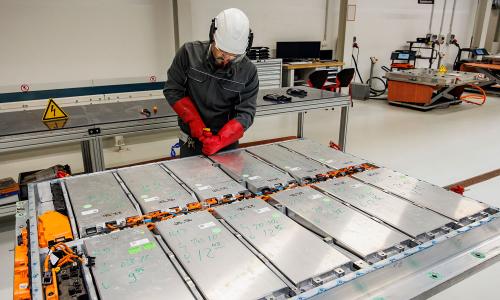The large volume of fuel used by medium- and heavy-duty trucks represents an opportunity for tremendous reductions in fuel consumption, so far impeded by misaligned incentives.
Unlike passenger vehicles, which have had fuel economy regulated since the 1970’s, medium- and heavy-duty trucks have only recently faced fuel economy standards. The first-ever greenhouse gas and fuel economy standards for trucks were finalized in 2011 and took effect in 2014. A second phase of standards was proposed in 2015 and would include vehicles sold through 2029.
These standards are a good first step in cutting oil consumption across the nation’s fleet of trucks, though they could—and should—be stronger. In current form, the proposed rules fall short of the levels of improvement that are cost-effective and technically achievable. Strengthening the standards—and further increasing the fuel efficiency of medium- and heavy-duty trucks—is an integral element of our Half the Oil plan.
Increasing truck fuel efficiency saves money and the environment.
We can improve truck fuel efficiency
Existing technologies and those in development offer a variety of cost-effective ways to increase truck fuel efficiency. These technologies include better diesel engines and transmissions, improved aerodynamics and tires, and hybrid technologies that improve the fuel efficiency of vehicles in stop-and-go operation.
Many leading companies are introducing these technologies and taking other steps, such as reducing idling, to improve the fuel efficiency of their truck fleets.
Our Half The Oil plan leverages fuel-saving technologies, practices, and policies, with the goal of drastically reducing U.S. oil consumption and pollution from trucks. UCS analysis finds that fleet-wide application of technologies available now and in the coming few years could nearly double the fuel efficiency of most commercial vehicles by 2030.
Economic benefits
Making our commercial vehicle fleet more efficient would bring widespread economic and environmental benefits.
We project that tractor-trailer owners could save $120,000 or more over eight years (after accounting for initial investment costs) through efficiency improvements, while the nation could reap annual savings of $10 billion by 2020. What's more, investing in truck efficiency initiatives could create an estimated 63,000 additional jobs by 2020, and 124,000 jobs by 2030.
Add to this the energy security and climate benefits of cutting oil use and improving the fuel efficiency of trucks and other commercial vehicles becomes a no-brainer.



